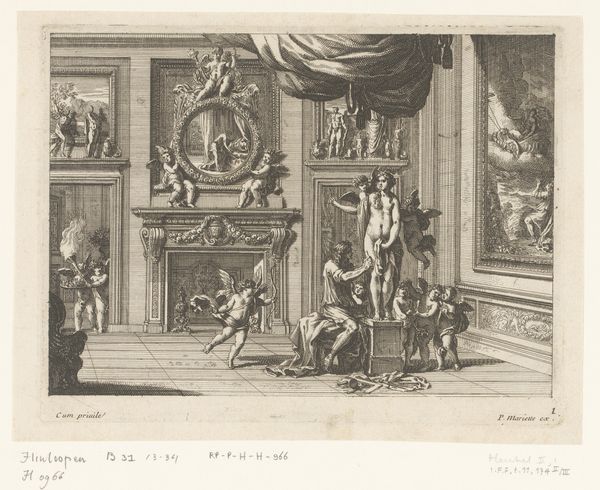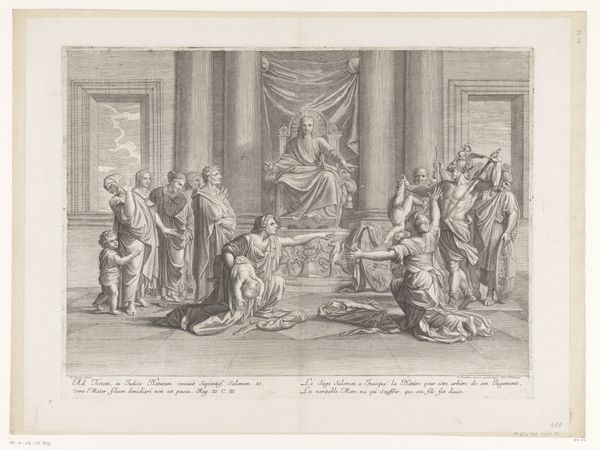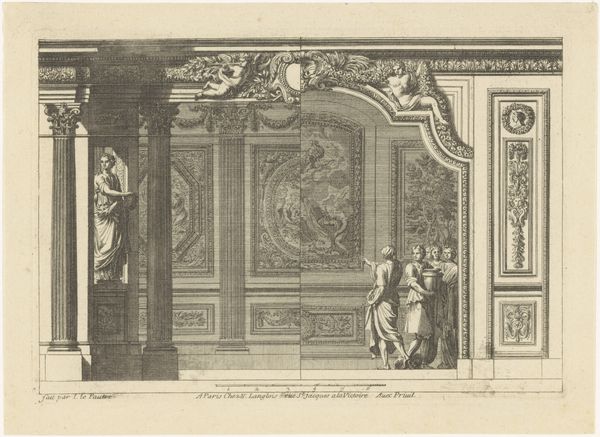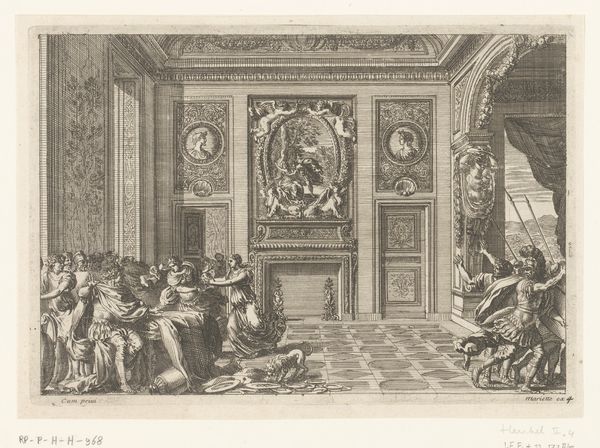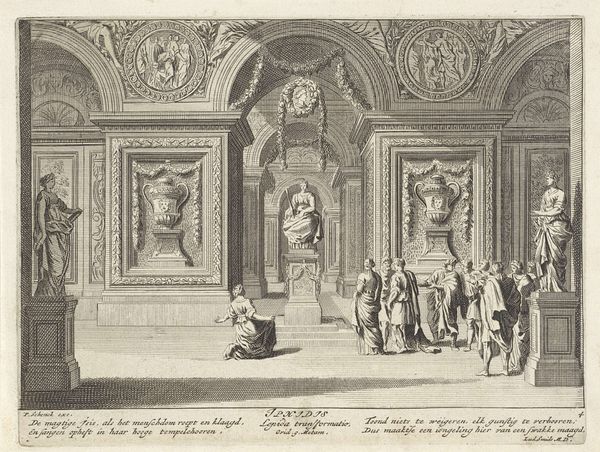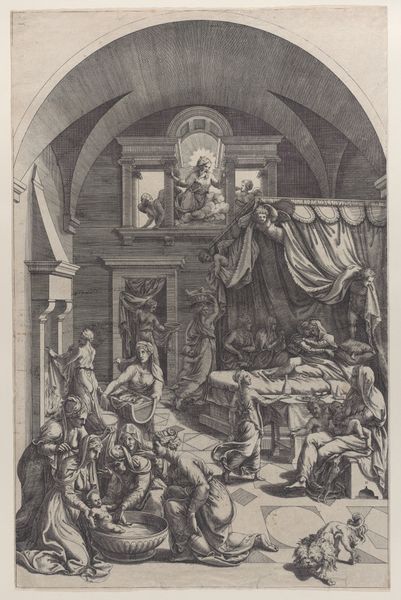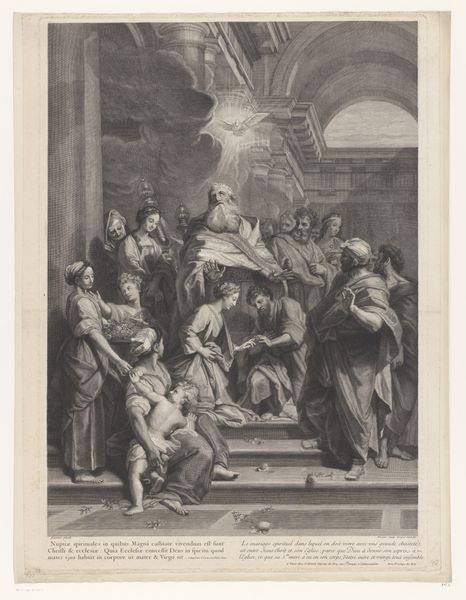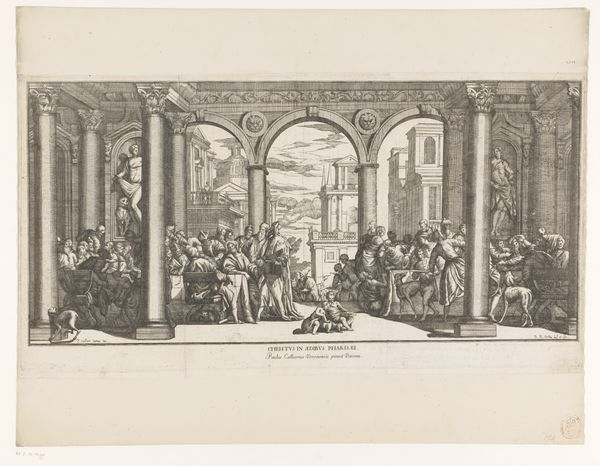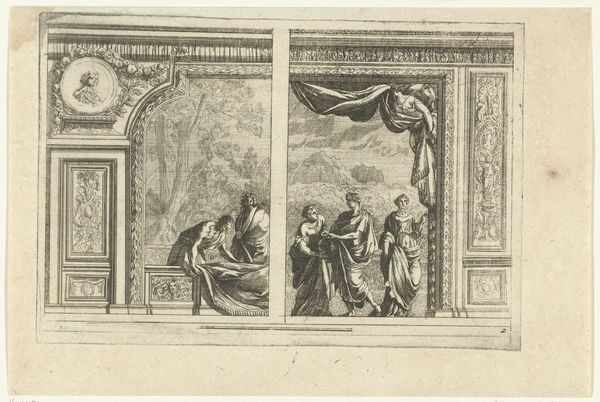
print, engraving, architecture
#
baroque
# print
#
old engraving style
#
cityscape
#
engraving
#
architecture
Dimensions: height 261 mm, width 325 mm
Copyright: Rijks Museum: Open Domain
This engraving of the Fountain of Bacchus in the Villa d'Este at Tivoli, was made by Giovanni Francesco Venturini around the turn of the 18th century. As a print, the work belongs to a world of reproducible images, made possible by the printing press. This technology allowed Venturini to efficiently translate the three-dimensional fountain into a two-dimensional image. He would have used tools like burins or etching needles to cut lines into a copper plate. This skilled labor required precision, control, and years of training. These lines then hold ink, which is transferred to paper to create the final image. The texture of the engraving reveals the careful, painstaking process involved. From the crisp lines defining the architecture to the delicate shading suggesting the flow of water, Venturini's technique brings the fountain to life. Think of all the layers of labor involved in the fountain itself: quarrying, carving, plumbing, and engineering expertise. Considering the material and technical processes behind this print gives us a richer understanding of its cultural significance, and the wide range of artisanal skills that contributed to its production.
Comments
No comments
Be the first to comment and join the conversation on the ultimate creative platform.
